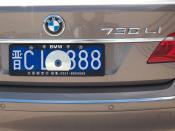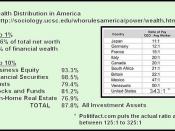It used to be that some were born with a silver spoon, others with a gold spoon or at least had the possibility to secure either for their upcoming generations. Now days, the richer are getting richer and the poorer are only getting poorer; or at least that is what Jamie Johnson argues is his documentary, ÃÂ The One PercentÃÂ. Johnson discusses how there is only a certain amount of people, a very exclusive percentage, that own most of AmericaÃÂs wealth and he happens to be one of them. Being heir to the Johnson & Johnson Pharmaceutical fortune, Jamie canÃÂt complain about being part of the bottom but he exposes how those that are on top, including himself and his family, are and will only keep getting richer. This documentary contains different panelist from different backgrounds and professions, providing an attempted in depth look at this social problematic.
Even though, the documentary attempts to show the reality of what wealthy America is, it only shows the subjective truth of Jamie Johnson: someone who has been surrounded by wealthy all his life.
Adding to this, the documentary didnÃÂt have any representation of wealthy ethnic people like Hispanics, Asians or Arabs with the exception of two black persons that really werenÃÂt as wealthy or influential as all the other represented. The African-American community could be observed when the documentary was representing the poor: people that lived in substandard housing and that according to Karl Muth, an investment banking heir, it is necessary for the wealthy to begin ÃÂdriving the poor out of their homesÃÂ so the more affluent could come and seize the lands and redevelop them for an opportunity to grow richer (Scheib 45).
In addition, the documentary establishes a pattern of portraying whites as the dominant affluent force driving...


